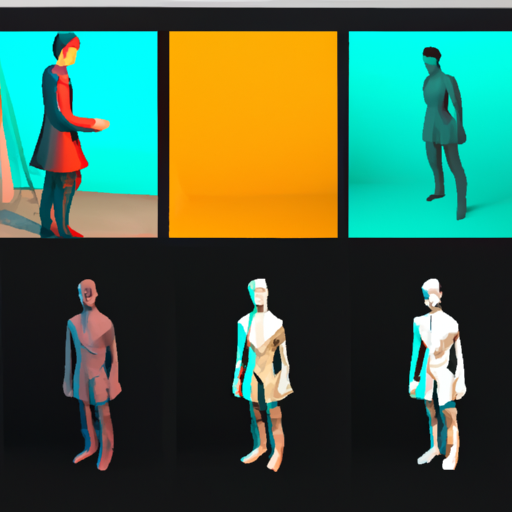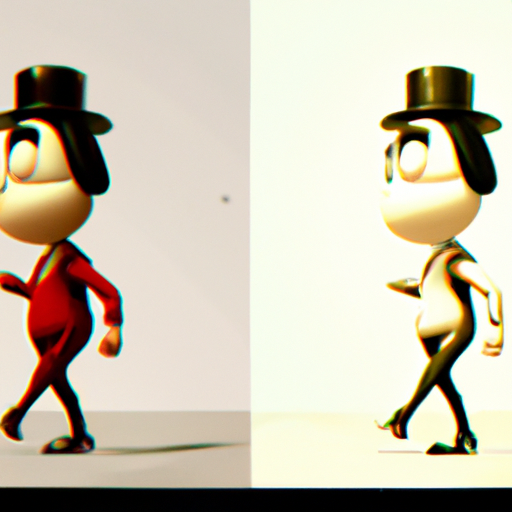
-
Table of Contents
Game Character Concept Art: From Sketch to 3D Model

Creating a compelling and visually stunning game character requires a well-defined process that starts with concept art and ends with a fully realized 3D model. This article will explore the journey of a game character from its initial sketch to the final 3D model, highlighting the importance of each step along the way.
The Importance of Concept Art
Concept art serves as the foundation for any game character design. It is the initial visual representation of the character, capturing its personality, appearance, and overall design. Concept artists work closely with game designers and art directors to bring the character to life.
One of the key benefits of concept art is that it allows for exploration and iteration. Artists can experiment with different ideas, styles, and variations of the character before settling on a final design. This process helps to refine the character’s visual identity and ensures that it aligns with the overall vision of the game.
For example, in the game “Overwatch,” each character has a unique design that reflects their abilities and personality. The concept art for characters like Tracer and Reaper went through multiple iterations before the final designs were chosen. This iterative process allowed the artists to refine the characters’ visual elements and create a cohesive and visually appealing roster of heroes.
Translating Concept Art into 3D Models
Once the concept art is finalized, the next step is to translate it into a 3D model. This process involves taking the 2D design and transforming it into a three-dimensional representation that can be used in the game.
3D modeling requires a combination of technical skills and artistic creativity. The artist must have a deep understanding of anatomy, proportions, and form to create a believable and visually appealing character. They also need to be proficient in software tools such as Maya, ZBrush, or Blender to bring the character to life.
During the 3D modeling process, the artist starts by creating a basic mesh or wireframe that serves as the foundation for the character. They then refine the shape, add details, and sculpt the character’s features. This step is crucial in capturing the essence of the concept art and ensuring that the character looks and feels as intended.
For example, in the game “God of War,” the character Kratos underwent a significant transformation from his original concept art to the final 3D model. The concept art depicted a muscular and imposing warrior, and the 3D model brought that vision to life by adding intricate details, realistic textures, and dynamic poses.
The Role of Texturing and Shading
Texturing and shading are essential steps in the 3D modeling process that add depth, realism, and visual interest to the character. Textures are applied to the 3D model to simulate different materials such as skin, fabric, or metal. Shading, on the other hand, involves defining how light interacts with the surfaces of the character.
Texturing and shading can significantly enhance the visual appeal of a game character. They help to create a sense of realism and make the character feel more tangible and immersive. Without proper texturing and shading, a 3D model may appear flat and lifeless.
Advanced techniques such as normal mapping and subsurface scattering are often used to achieve more realistic results. Normal mapping simulates the appearance of fine details on the character’s surface without adding additional geometry, while subsurface scattering mimics the way light penetrates and scatters within translucent materials like skin.
For instance, in the game “The Last of Us Part II,” the character Ellie’s 3D model features highly detailed textures and realistic shading. The combination of intricate skin textures, fabric details, and subtle lighting effects brings the character to life and adds to the overall immersion of the game.
Animation and Rigging
Once the 3D model is complete, it needs to be rigged and animated. Rigging involves creating a digital skeleton for the character, allowing it to move and be posed realistically. Animation brings the character to life by giving it fluid and natural movements.
Rigging and animation are crucial for game characters as they directly impact gameplay and player experience. A well-rigged character with smooth animations can make the game feel more immersive and responsive. On the other hand, poorly executed rigging or stiff animations can detract from the overall experience.
Game developers often use motion capture technology to capture realistic movements and apply them to the character. This technique helps to achieve lifelike animations and save time compared to manually animating every movement from scratch.
For example, in the game “Assassin’s Creed Valhalla,” the character Eivor’s animations were created using a combination of motion capture and hand-keyed animation. This approach allowed for a wide range of realistic movements, from combat sequences to subtle facial expressions, enhancing the player’s immersion in the Viking world.
Conclusion
Creating a game character from concept art to a fully realized 3D model is a complex and iterative process. Each step, from the initial sketch to the final animation, plays a crucial role in bringing the character to life and enhancing the overall gaming experience.
Concept art serves as the foundation, allowing for exploration and iteration to refine the character’s visual identity. The 3D modeling process translates the concept art into a three-dimensional representation, capturing the essence of the design. Texturing and shading add depth and realism, while animation and rigging bring the character to life with fluid and natural movements.
By understanding and appreciating the intricacies of this process, game developers and players alike can gain a deeper appreciation for the artistry and craftsmanship behind game character design.
